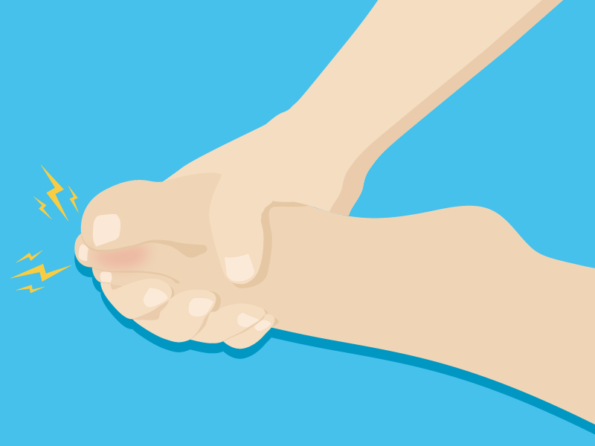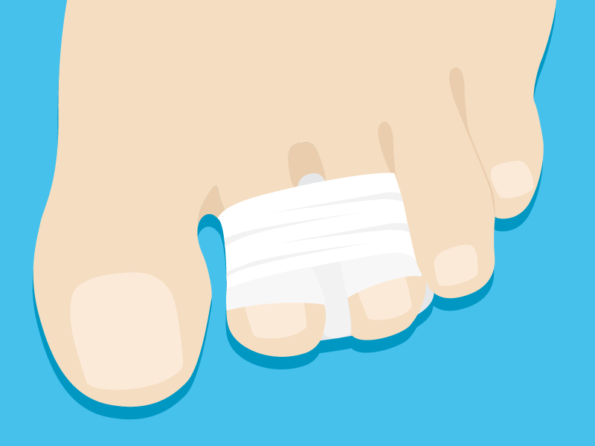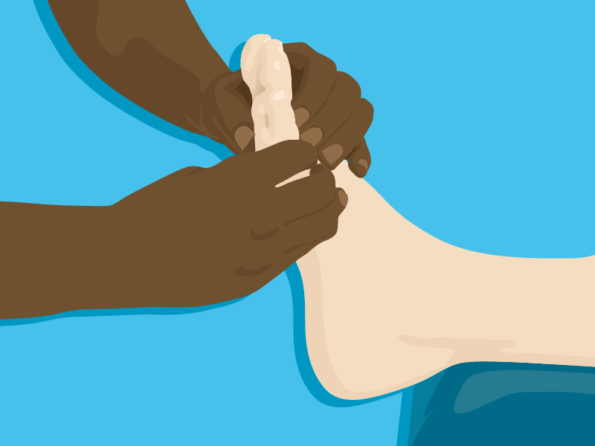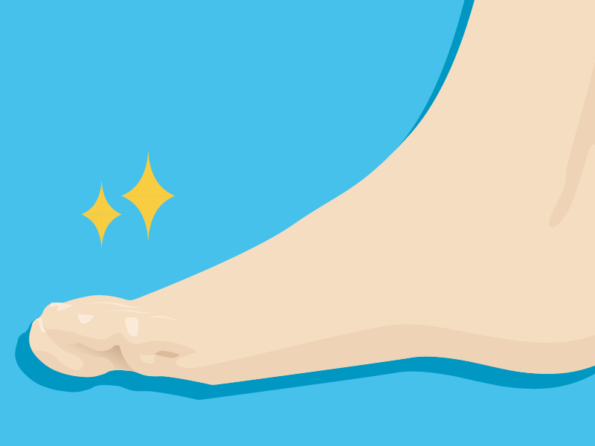Your Guide On How to Recover From a Broken Toe
I remember exactly what happened the day I broke my toe. I was walking down my hallway barefoot when I stubbed my pinky toe so hard against a door frame that I saw stars. I hobbled back to my bedroom and refused to look at the damage for hours. If you’ve ever stubbed your toe too hard, you’ll know that the immediate, severe pain can bring you to your knees and make you wonder if it’s broken. In many cases, the injury is simply a sprain, but it can be hard to know the difference between a sprain and a broken toe without medical attention.
When I broke my toe, I didn’t recognize the symptoms of it right away – I just knew that my pinky toe hurt a lot. But, learning to recognize the symptoms and treatment of a broken toe is important for your immediate next steps it needs to heal. If a broken toe is left untreated, it can lead to permanent issues that can affect how you walk and run. And, at the very least, unattended broken toes can leave you in a lot of avoidable pain.
I don’t want you to have to go through either of these scenarios, so follow along as I detail how to know if a toe is broken, what you can do to ensure a speedy recovery, and things to consider once it’s healed.
How to Know If You Have a Broken Toe


Stubbing or dropping something heavy on a toe is very common and it never feels good, but most of these incidents are nothing more than a minor inconvenience. But, sometimes it goes well beyond that. The first clue that something is actually wrong with your toe is the immediate and severe pain that comes and stays for a prolonged period of time. Another, less common, clue that something is wrong is actually hearing the break happen.
Other general symptoms of a broken toe are:
- Throbbing pain at a specific point of the toe
- Swelling
- Bruising
- Difficulty putting weight on the toe
- Toe resting at an unnatural angle
- Stiffness
If you’re experiencing any of these symptoms, it’s a good idea to pay a visit to your doctor or a local emergency room as soon as possible. Once a break happens, it’s going to immediately try to heal itself, which can cause even more problems down the road if it doesn’t heal properly.
Once you’re at the hospital, the medical staff will perform initial diagnostic tests and get your medical history. Be sure to tell your doctor as many details as you can about the injury and your symptoms so they’ll have a clear picture of what they’re working with. Also, let them know if you’re experiencing a loss of feeling or a tingling sensation in your toe because it may be a sign of nerve damage.
After you’re admitted, the only way to really diagnose a broken toe is to get an x-ray taken of the afflicted digit. The technician will likely get multiple angles of your toe to make sure that they can see the damage from all sides. If there’s a chance the toe is broken, the doctor will be able to diagnose how severe the break is and recommend treatment options to you.
Healing and Treatment Options


So, I have good news and bad news. The good news is that, in most cases, broken toes are relatively clean breaks, which means that they won’t require surgery or extensive intervention to heal. Unfortunately, however, there’s not much a doctor can do in those cases. The best way to heal your broken toe is by keeping it stable and elevated while periodically applying ice to your toe for 10-20 minutes to help manage any swelling.
Splinting
The typical treatment for a broken toe is called buddy taping. With buddy taping, you apply gauze around the broken toe, secure it carefully to the toe next to it with medical tape, and place a gauze pad in between the toes to prevent skin irritation. The non-broken toe helps keep the broken one stable as you walk around, giving it the support it needs to begin healing properly.
Surgery and Additional Treatments
Some toe breaks aren’t as straight forward, and if you have bone fragments that need to heal, taping may not be enough. In these cases, you’ll need to wear a walking cast to ensure that your toe has extra stability while walking.
In very serious cases, you may need surgery to reset the broken bones. In this process, the surgeon will sometimes put a pin or a permanent screw into the bone to help it heal properly.
Recovering From a Broken Toe


As your toe heals, it’s likely going to be tender and swollen. Try to avoid activities such as running, playing sports, and walking long distances for a couple of months to ensure that your bone has the best chance to heal. Basically, just take it easy and continue to rest, elevate, and ice your toe. Recovery time can vary based on the location and severity of your injury, but you’ll generally be back on your feet (pun intended!) within six weeks.
If the toe injury is severe enough, your doctor may recommend going to see a physical therapist, These specialists will then give you a series of exercises that will help strengthen your toe and maximize its range of motion.
Lasting Impact


Ultimately, broken toes aren’t that big of a deal, but they need to be taken seriously so you can fully heal. The key to a good outcome is following your doctor’s advice. After a couple of weeks, you can start to carefully put more pressure on your broken toe each day to see how it’s recovering. Take any slight improvements in pain and discomfort as signs that your injury is healing.
Eventually, start to ease back into your activities. But, don’t forget to listen to your body and back off on your activity if something doesn’t feel right. After all, it’s better to take longer to recover than to rush back into your activities too quickly and injure yourself all over again.
I hope my guide helped you! Have you ever broken your toe? If so, let me know your recovery process in the comments below!
